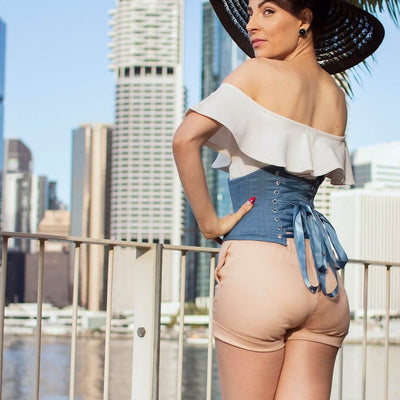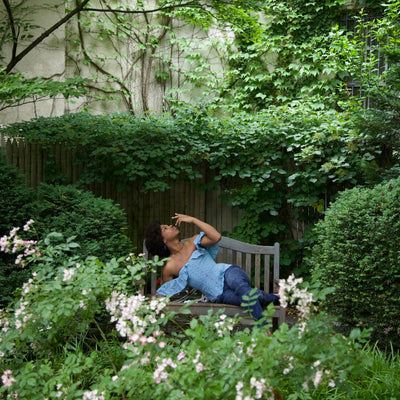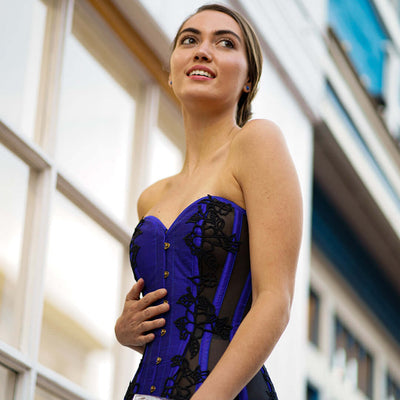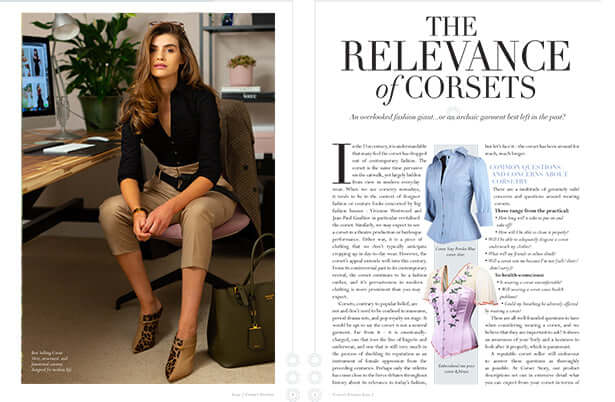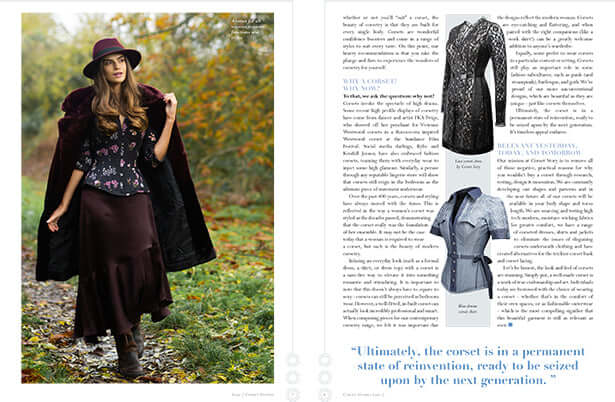Oh, For the Love of Corsets: A Debated Cultural Touchstone
A Debated Cultural Touchstone
Where did Corsets come from?
By Kia Schluetz
If you’re reading this, you probably love corsets or at least find them interesting. The appeal of the corset is that of one of the most classic items of clothing- and yet in popular culture there are also associations with the garment in conjunction with high fashion, rebellion, punk, antiquated subjugation of women, freedom of expression, and so much more. It could seem strange at first that an item worn for centuries as an ordinary garment could be considered rebellious. One might also be curious how a single item could be strongly associated both with chains of oppression and with freedom of expression. How can we make any sense of this? Where do these associations come from?
To properly explore the answer to these questions, it is necessary to go back to the very beginning of when corsets seem to have appeared. For over a thousand years, corsets and similar types of garments in some form or another have existed. For as long as they have been discussed, they have been the subject of controversy.
Before corsets were ever conceived, women and some men wore structured garments of one kind or another, possibly as far back as 2000 B. C. in the Minoan civilization. The Minoans are a civilization that existed in Greece, and what we know of them is limited. From the Minoans, we have a pair of snake goddess statues wearing thick belts that somewhat resemble waist cincher corsets.6 For certain, however, the corset has been present in Western Europe for around 600 – 800 years.1
In the mid 1400’s, the age of chivalrous knights and the Hundred Years War between France and Britain, an ideological tug at the laces began. Before this period, it seems that various kinds of structured garments were likely so ubiquitous that they simply did not merit discussion. One of the first known depictions of a garment recognizable as a corset appeared in 1450’s France, in a painting called “The Madonna Surrounded by Seraphim and Cherubim,” painted by Jean Fouquet. The model representing the Madonna was the French King’s mistress, Agnés Sorel. The painting portrays Sorel as the Madonna feeding the baby Jesus, with her breast exposed through an unlaced corset, a courtly nip-slip that Sorel was said to have repeated with some regularity. She was rumored to walk around court with the top of her corset unlaced and breasts exposed, thus causing an association between the garment and immorality. However, some of these accounts appear to have been politically motivated. Sorel held incredible power in the King’s court. Sorel was very close to the King and was able to gain several relatives positions at court as well as land. Some of the more scandalous accounts of Sorel were written of her by a Burgundian author2, whose rulers sought power and wider territorial control in their region.4 Indeed, there are conflicting accounts of her actions and her life, including her poisoning and death at the age of 28.2 Thus was the first controversy of corsetry- like a roller coaster’s first drop at the beginning of a wild ride.

Securely Laced into Society
From this point on, while still unmistakably a subject of dispute, corsets continued their rise in popular culture. Corsets were so ingrained in society by the 1700’s that “A bridegroom might visit his bride-to-be for breakfast in her home and watch her being laced up by her maid” as a common morning activity.

Italian Corset from the 1770’s, The Metropolitan Museum of Art, Public Domain, via metmuseum.org
Corsets today, connecting us to the past
Today, we have the privilege of examining evidence in the form of paintings, drawings, medical journals, and extant garments that show us what previous generations wore and valued. From extremely simple designs to extremely structured designs involving whale bones, to corsets shaped like sharp cones that pressed the breasts flat, to s-bends and romantic and sexy shapes, corsets can run the gamut, symbolizing any set of values, creating any body shape imaginable, and providing back support as well as acting in some cases as medical devices.5
Corsets carry with them meaning and intention, making them beautiful symbolic objects as well as targets of scorn and heavy banners of culture. During the 1700’s, one of the fathers of the French revolution, Jean Jacques Rousseau, declared in his writings that the corset was “an enemy of mankind,”1 which was not surprising considering that he had a contentious relationship with upper-class people, whom he viewed as despots, that wore the most elaborate and obvious versions of the corset.
Contemporary trends
We modern people now find ourselves gifted with the resurgence of such a fascinating and attractive methods of dress after a short lull (relative to the length of the corset’s long history) in the garment’s popularity. With the use of ultra-fast communication and more efficient production techniques, in the 21st century our global society can share photographs of historical and modern innovations in corsetry. This enables corset makers to find more inspiration and fabrics from all over the world, combining these finds into something truly innovative and current.
We live, then, in an exciting period to rediscover old culture while making it new again. An explosion of globally shared culture, combined with an interest in the pasts of various places have helped place an emphasis on the exciting and interesting things that can be recreated in a current context.
Corsets are certainly one of those exciting items, giving infinite opportunity to the brave mavens of civilization. But as we know, to explore corsets can mean becoming part of the story and part of a conversation about a controversial object, so try to keep some steel in your stays.
Those bold enough to reclaim a garment so iconic, so daring, so full of meaning- those willing to wear corsets today- are taking a symbol with nearly a thousand years of tradition and purpose and making it their own.


